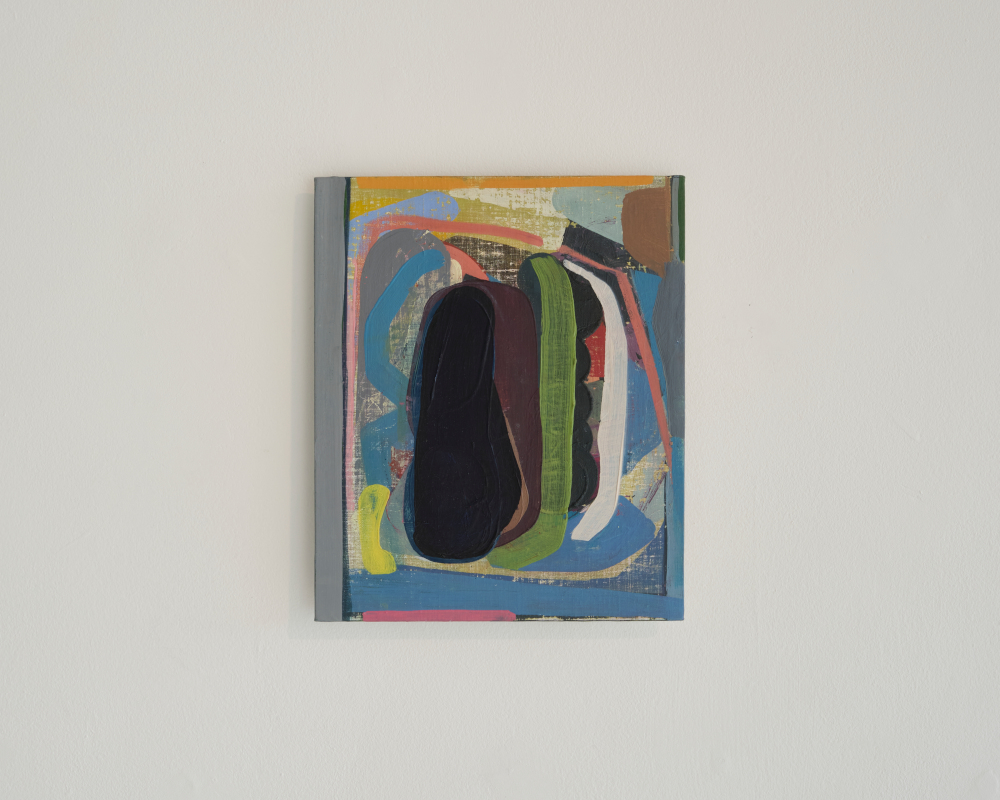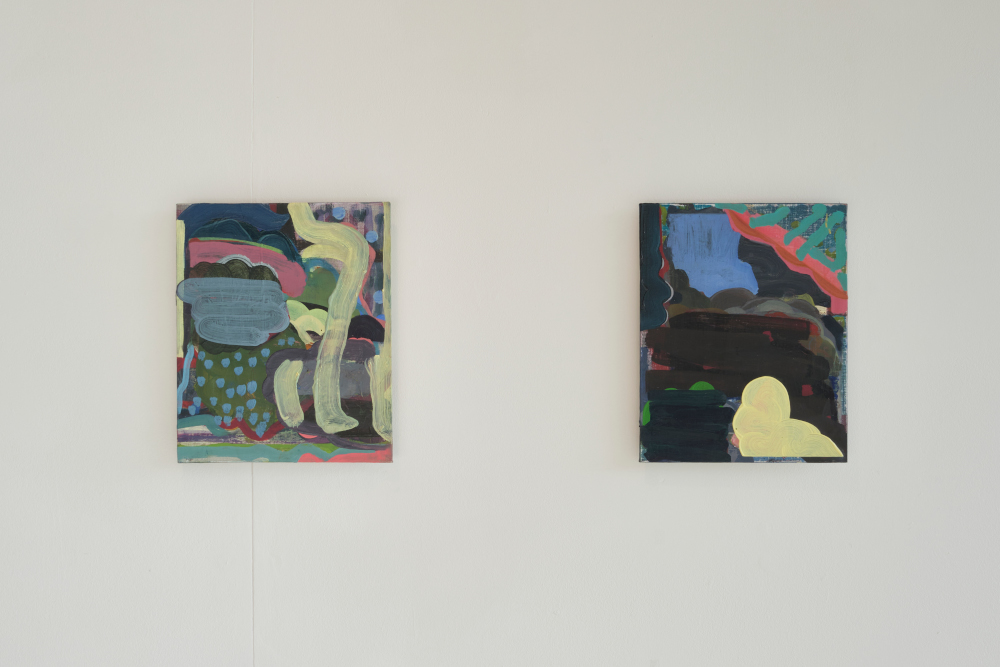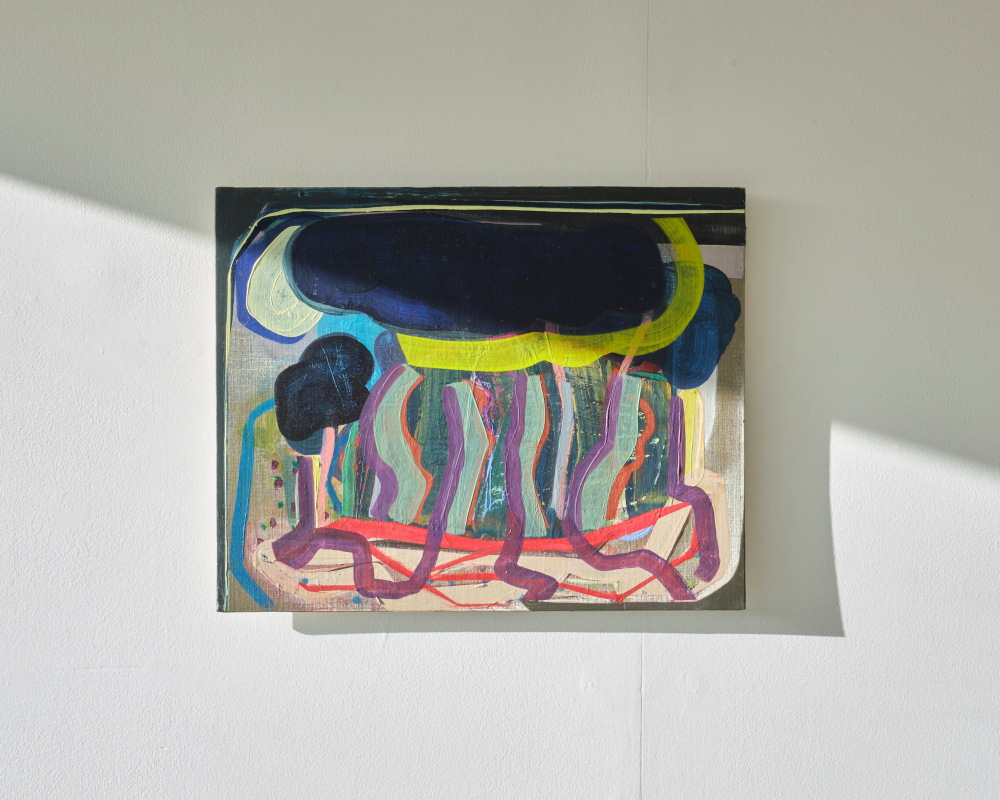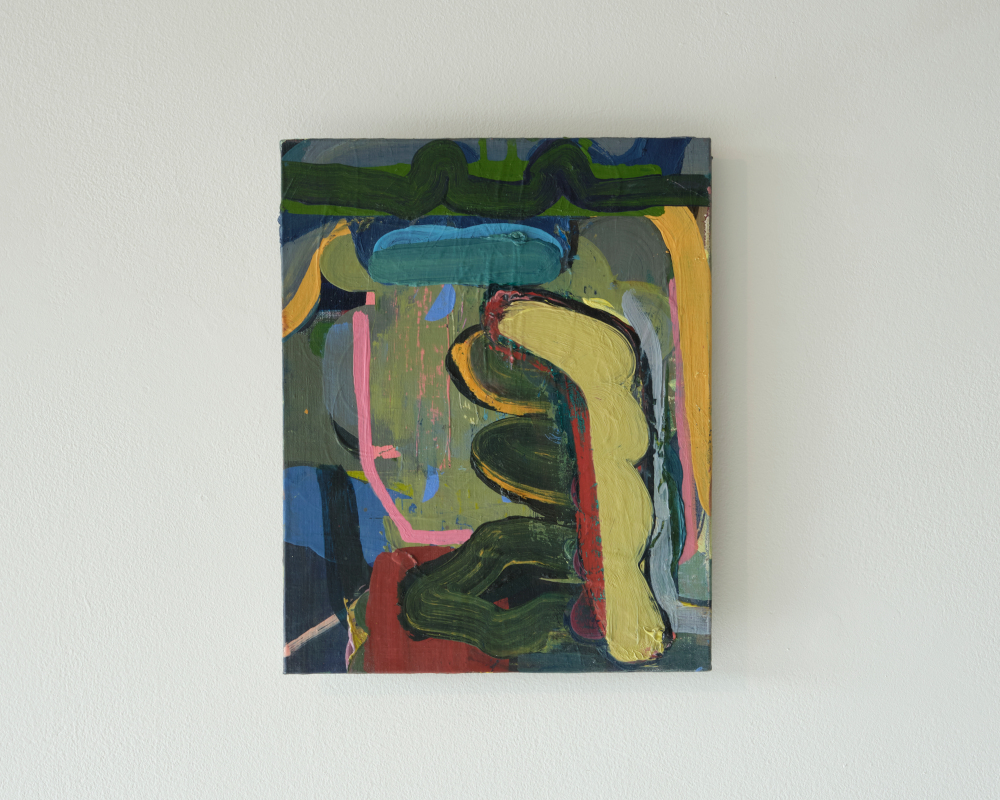Materialising in the Almost-Shadow
Unseen Shows: Visual Artists’ News Sheet | July – August 2020
DR CHÉRIE DRIVER PROFILES ‘PENUMBRA’, AN EXHIBITION OF
FEMALE PAINTERS AT F.E. MCWILLIAM GALLERY & STUDIOS.
THE EXHIBITION, ‘PENUMBRA’ , can be situated alongside exhibitions of works by contemporary female artists from across the island of Ireland. These exhibitions have sought to address the invisibility of such work. ‘Penumbra’ presents us with a range of material practices that are reimagining and transgressing the terrain of what defines Ireland and Irish cultural identity. This hinges upon a resurgence in concerns for the materiality of paint itself as the very site of meaning. ‘Penumbra’ comes from the Latin paene ‘almost’ and umbra ‘shadow’ meaning a shaded spot, or the outer part of a conical darkness cast behind a celestial object by a light source. In this text, I will reflect on how the works in this exhibition bring into the frame that which was always hauntingly present, located in the half-light across the ‘Penumbra’. All of the works in this exhibition offer a visceral material encounter. There are brush strokes, marks, scratches, blocks of colour, semi-transparent layers, appendages, incisions and incorporated readymades. Some works push beyond traditional definitions of painting. The work of Susan Connolly and Yasmine Robinson is committed to the materiality of paint on the canvas. However, through folding in considerations of site specificity (Connolly) and the readymade (Robinson), both are an expanded conceptualisation of painting. (5) Susan Connolly’s work embodies ‘revitalising strategies’ current in the expanded field of painting. 3 In over+over&over, Connolly explores the potential of the medium to literally make its own image. (4) In its materiality and site specificity, the work explicitly asks how the viewer ‘looks’ at painting. This embodied, almost performative, element engages both the viewer, who must navigate it, and the institutional structure and conditions it critiques. This gives the work ‘subject-like qualities’, intervening as agent with the institution and viewer.
Yasmine Robinson’s work is evocative of urban landscapes, where she is drawn to certain changing dynamics of space as subject and a “familiar rectangular, vacant (almost decaying) aesthetic”. (6) The work is invigorating , the traditional landscape with its incorporation of readymade elements, altering the definitions of painting by folding in the “social living labour” of the incorporating materials and/ or objects. Her use of spray paint removes her mark from the surface of the painting, thereby dematerialising the painter’s trace itself.
The works of Fiona Finnegan, Alison Pilkington and Sarah Dwyer also resonate within this field. The traces of materiality and activity evoke a subjectivity within the painting for the viewer, suggesting a presence and an agency. The paintings bring us though gateways, liminal gaps and passageways into a psychic terrain of threatening spaces.
The half-light quality of Fiona Finnegan’s work lures the
viewer through spaces of thin, luminous washes of colour
painted over textured ground. (8) In these paintings, we see
cloaked figures moving collectively towards an unknown
assembly, for an unknown purpose. The imaginary and
illusionary are invested in the borderspace of the painting,
underscored by the paint’s rich materiality.
Alison Pilkington’s paintings are situated between abstraction and figuration; they depict simple half-formed shapes,
which are open to metaphorical and anthropomorphic inter-
pretation. (9) Pilkington explains that they “explore how familiar yet comic images have the potential to disturb, disorientate or to be uncanny”. One can’t help but project meaning onto the recurring shape and figure. Is this a benign, centaur-like creature, found in dark environments or cocooned in a globular bubble, as if linked in narrative to another nearby?
Sarah Dwyer’s work emerges from a struggle as she pushes and pulls the material to propose a new equilibrium of relations, reconfiguring what is present and what is absent to reinstate a new arrangement of balance and form. In the borderspace of encountering the painting, there are glimpses of protruding human flesh, limbs, a breast, a torso, all of which can be read clearly, yet remain unregulated and distorted.
The paintings of Hannah Casey-Brogan, Sinéad Aldridge and Louise Wallace resonate particularly in tension against the tradition of Irish landscape painting. They stretch out a shifting, open and nuanced cartography of cultural identity more located in their specificity to places of interior processing, collective anxiety and industrial urban places all being remapped and recovered by atmosphere, a prevailing weather system, or encroaching wilderness. ‘The Third Shift’ is a series of small paintings by Hannah
Casey-Brogan. Casey-Brogan’s work teeters between abstraction and landscape painting, mapping its elemental curvature and form, capturing its environmental essence and invoking the shifting weather systems moving across the geographical terrain. The paintings are small in scale, determined by the domestic nature of her home/studio-based practice. In mapping, rendering and processing, Casey-Brogan is shifting a vocabulary in relation to the land.
Sinéad Aldridge’s paintings lay out shallow muted surfaces on a background of linen stretched on board. 10 The paint is thinly applied in watercolour like transparencies; shapes form into blocked shades, hushed so intently that brush marks are untraceable. This sensitivity in the paint draws you closer to the surface, which can be seen as a stage, upon which actions and the execution of marks become manifest.
Material process, personal and local narrative and a connection to place are central roots in the paintings of Louise Wallace. An unease envelops these scenes including: a 1970s black bungalow, shrouded in deep shadow by overbearing conifer hedging; a pond that once powered a linen mill; an unfenced ‘half-moon lake’, lamented in virtual communities as a deadly lure for local children; and derelict outbuildings at the edge of Bellevue Zoo. Reverberating on the canvas and emanating from within each of these sites are interwoven fragments of oral histories, local story telling and poetry. (11)
Material processes on the surface of the canvas are an unfolding dimension in the tension held within each site and this is deeply felt when considering the work. Water fills each composition amongst these environments of casual neglect. A wilderness rises and encroaches on the crumbling industrial infrastructure. These negotiations shift and play out, in and upon the paintings surfaces, ebbing and flowing, pushing and pulling.
‘Penumbra’ increases the visibility of the painterly practice of women artists in, of and from the island of Ireland. The encounter with the work is an encounter with the material; time with each draws you to further consider its subjectivity and its agency. There are common resonances amongst these works where light and shadow shift across terrains. There is tension in sheeted veils; atmospheric systems press-down heavy on spaces below. Although at times the prevailing mood is ruminating and uncertain, crescent forms or moons beam out – something revitalising is emerging.
This text is drawn from an extended essay, originally
published in the exhibition catalogue. (12)
Catalogue essay by Dr Chérie Driver is a Lecturer in Art Theory at the Belfast School of Art.
Extract published in VAN Visual Artist Newsletter July/ August Issue 2020.
Notes
1 Key exhibitions include: ‘Irish Women Artists, From the Eighteenth Century to the Present Day’ (The National Gallery of Ireland & The Douglas Hyde Gallery, 1987); ‘Relocating History’ (The Fenderesky Gallery & The Orchard Gallery 1993); ‘Re/dressing Cathleen’ (McMullen Museum of Art, 1997); and ‘Elliptical Affinities: Irish Women Artists and the Politics of the Body 1985-present’ (Highlanes Gallery, 2019-2020).
2 Isabelle Graw, ‘The Value of Liveliness, Painting as an index of Agency in the New Economy’ in Isabelle Graw & Ewa Lajer Burcharth, eds. Painting Beyond Itself: The Medium in the Post-medium Condition (Berlin:Sternberg Press, 2013) pp. 79-101.
3 Ibid.
4 The discussion here is directly informed by correspondence with the artist and a statement on the work.
5 Graw, 2013, p. 86.
6 Kate Mothes, interview with Yasmine Robinson, ‘IN PAINTING ON’, 14/08/17 yngspc.com
7 Graw, 2013, p. 85. See also John Roberts, The intangibilities of Form: Skill and Deskilling in Art after the Readymade (London: Verso, 2007) p. 24.
8 The discussion here is directly informed by correspondence with the artist and a statement on the work.
9 Ibid.
10 Ibid.
11 Ibid.
12 Chérie Driver, ‘‘Penumbra’: Painting Materialising in the Almost Shadow’ in Penumbra [Exhibition Catalogue] (Bandridge: F.E. McWilliam Gallery & Studio, 2020) pp. 3-8.



